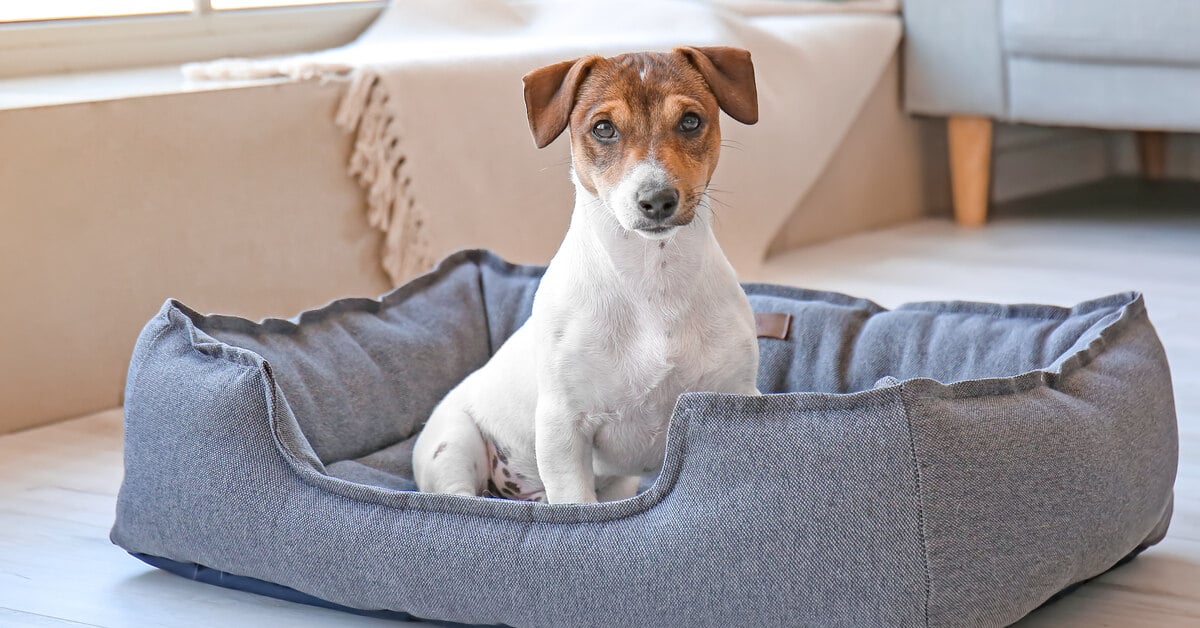The Psychology of Colors in Dog Bed Selection
Posted on March 6, 2025 by Team Gorilla

Understanding the psychology of colors in dog bed selection can help you create a more pleasant, comfortable space for your furry friend. You can enhance your dog’s mood, behavior, and overall well-being with the right hue. This guide dives into what dog owners need to know about color psychology, including how dogs perceive color, and which shades are most effective for their comfort.
What Is Color Psychology?
Color psychology refers to the study of how colors influence emotions and behaviors. Humans rely heavily on visual cues, and color can evoke a range of feelings, from calmness to excitement.
While dogs don’t see the full spectrum of colors as humans do, the hues they can detect may still impact their mood and behavior. By understanding this, you can select a dog bed that meets their emotional and behavioral needs.
Understanding Canine Color Perception
It’s a common myth that dogs are color blind. Dogs can see color, but their vision is limited compared to ours. Unlike humans who see a rich spectrum of color, dogs primarily perceive shades of blue, yellow, and gray.
Therefore, many colors, such as green and orange, may register as blue or yellow tones for dogs. On the other hand, red is quite challenging for dogs to detect, often appearing as gray. Understanding which colors your dog can help you see if you want to use color psychology principles when selecting a dog bed.
Blue: The Color of Calm
Blue is one of the most easily recognizable colors for dogs. This color promotes relaxation, making it a great choice for dogs who tend to be restless or anxious. A blue-toned bed may provide the soothing effect your pup needs if they struggle with settling down or sleeping through the night. Since green objects often register as blue, bedding in shades of green is also an option.
Yellow: An Energizing Hue
Yellow radiates energy and warmth, making it an excellent choice for dogs who are naturally playful or need an extra pick-me-up. Since orange often looks yellow to dogs, this color family works well for vibrant personalities. However, it’s worth noting that yellow may not be ideal for sleep areas, as its energizing effects might keep some dogs more alert.
Gray and Brown: The Neutral Tones
Many dog beds feature gray or brown tones due to their neutral look and practicality. Dogs naturally see gray, offering a subtle and calming effect. Similarly, brown tones echo a sense of grounding and familiarity, making them ideal for creating a cozy and inviting space.
Considering Your Dog’s Unique Personality
At the end of the day, your dog’s unique personality plays a big role in bed selection. Is your dog a bundle of energy, or do they love snoozing in a quiet corner? Understanding their character will help you choose a color that best matches their behavior and supports their needs. Pair the color with other features, such as orthopedic foam for older dogs or non-chewable dog beds for teething pups.
Color choice isn’t just about looks—it’s about creating an environment where your dog feels at ease. Pick a bed that perfectly suits your pup’s personality by understanding how dogs perceive color and which hues evoke certain moods. Start exploring dog beds today to find one that balances style, durability, and comfort for your best friend.
